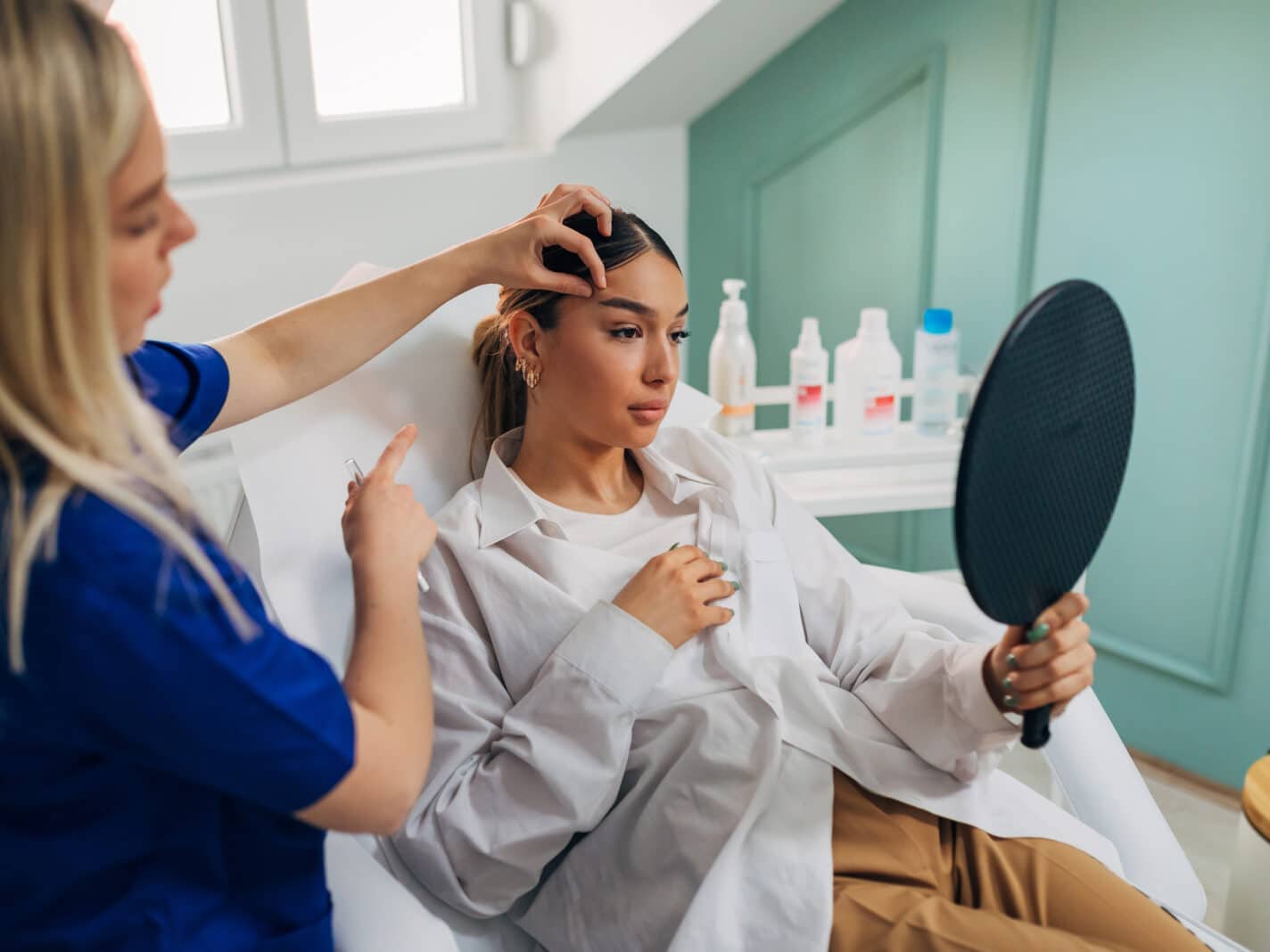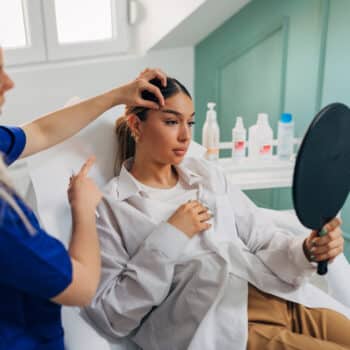Entering my 30s, I never imagined I’d entertain the idea of getting any type of injectables. Like many, I held onto the notion that aging gracefully meant accepting every wrinkle and line. However, as the years passed, I found myself considering cosmetic procedures, not out of disdain for aging, to chase trends, or succumb to societal pressure; instead, it became a personal decision to maintain a sense of confidence and familiarity with my appearance.
I started noticing subtle changes on my face — witnessing the gradual transformation of my face shape over time, which was changing my entire appearance and prompted me to explore the idea of minor tweaks. Then, there was also the changes that impacted my makeup routine. I couldn’t ignore how certain lines and creases disrupted the application of any coverage products and how they settled.
That’s why at 31 years old, I finally decided to try out injectables. I went for Botox injections for my lateral canthal lines (also known as crow’s feet, at the corners of my eyes) and jawline filler – (Juvéderm Volux XC). As I just received my second treatment, I’ve come to value being transparent in cosmetic procedures, and I will share some of the things I’ve learned in the process. Growing up, I witnessed family members and tías attributing their subtle transformations to homemade remedies or miracle creams, masking the reality of cosmetic enhancements. This culture of secrecy perpetuated unrealistic beauty standards and skewed perceptions of aging. As I navigate my own journey with injectables, I recognize the importance of honesty and openness in reshaping these narratives. By sharing my experiences openly, I hope to challenge traditional beauty ideals and empower others to make informed choices about their aesthetic journeys.
Informed decisions are critical as injectables like Botox and fillers have become increasingly popular over the years, especially for our communities. The American Society of Plastic Surgeons (ASPS) estimated that 22 percent of the total cosmetic procedures in 2011 were performed in nonwhite groups, and 50 percent of this group comprised Latina women. Still, with its growing popularity, navigating the world of injectables can be daunting, filled with misconceptions and potential pitfalls that I once feared. So, I spoke with Francesca Lewis, MD of Delray Dermatology in South Florida, to discuss what I’ve discovered and to speak more about key considerations for those exploring injectable treatments.
1
It Can Look Natural
According to Dr. Lewis, one of the primary misconceptions surrounding injectables revolves around the fear of looking unnatural or overdone. The prevalence of heavily altered appearances and filters on social media can instill apprehension in those considering injectables. “The perception is out there that if you do filler, you’re going to look fake or it’s going to look unnatural, when in reality each filler syringe is equivalent to a fifth of a teaspoon, it’s a very small quantity,” Dr. Lewis tells REMEZCLA.
She continued, “People who look drastically overfilled usually have a huge amount of volume being used over multiple sessions, and also a lot of components of plastic surgery, fat grafting; what people think is filler is usually some combination of many other things.” Additionally, Dr. Lewis also notes concerns about lip augmentation often deter older patients from seeking treatment, fearing exaggerated results. Yet, with the use of thin fillers and conservative approaches, practitioners can restore lost volume in a manner that appears harmonious and natural.
2
Beyond Aesthetics
While injectables are commonly associated with cosmetic enhancements, how they’re used extends far beyond aesthetic purposes. Botox, in particular, boasts a range of medical applications, ranging from treating bladder spasms to alleviating tension headaches and migraines. Dr. Lewis underscores the therapeutic potential of Botox, noting its efficacy in addressing conditions such as temporomandibular joint disorder (TMJ) and hyperhidrosis (excessive sweating). Moreover, the use of Botox in the masseter muscle not only relieves discomfort associated with clenching and grinding but also offers cosmetic benefits by slimming the lower face.
3
Avoiding Common Mistakes
Despite the accessibility of injectable procedures, patients must exercise caution to avoid potential pitfalls. Dr. Lewis highlights the importance of discernment when selecting a provider, cautioning against equating social media popularity with expertise.
She emphasized to REMEZCLA, “Just because someone posted before and after, it could be photoshopped; might not even be theirs. There are so many accounts that steal photos.” Patients should prioritize practitioners who prioritize safety, possess in-depth knowledge of products, and employ proper techniques. Additionally, understanding the specific product being used, its intended application, and the injector’s experience level are crucial factors in ensuring the best outcome. Moreover, by asking pertinent questions, patients can mitigate risks and make informed decisions regarding their injectable treatments.
This level of consideration is also critical if complications were to occur. A board-certified dermatologist or plastic surgeon who knows what they’re doing and understands the risks can manage complications. Dr. Lewis adds, “When complications occur, they can be really serious with all of these things in the filler realm, so we want to make sure we’re adequately prepared for it.”
4
Don't Go The Distance
Within Latine communities, it’s common to receive recommendations for treatments in our home countries. And while there are qualified physicians around the world, it’s important to remember that location can be critical, even from state to state in the U.S. — especially if something were to go wrong. “You want to be where your doctor is in case there’s a complication,” stresses Dr. Lewis. “If something happens and you’re back in the U.S., then they’re not there to fix it.” That’s why patients should heavily consider finding their best options close to home.
Overall, navigating the world of injectables requires careful consideration and discernment. As someone who has entered this realm, I feel very comfortable with my treatments and have had zero complications or concerns, which is attributed to doing my research and finding the best practitioner for me.




